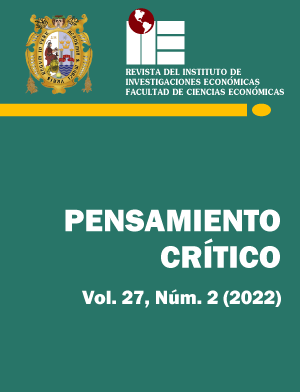An Indicator to Measure the Regional Social Risk: The Case of the Cajamarca Department in Peru
DOI:
https://doi.org/10.15381/pc.v27i2.23649Keywords:
Risk estimation, probability of occurrence, social risk index, risk measurementAbstract
This research starts with a literature synthesis on risk and its measurement; then, as a second point, presents the methodological process for the construction of an index to measure social risk for Cajamarca’s department in Peru, which has been based on the application of probability theory. The estimation methodology addresses two approaches: i) the probability of occurrence of an event that generates a total or partial paralysis of the private sector activity for a specific month, and ii) the probability of occurrence of at least one day of paralysis for a specific month. The data used has been recorded for the period between January 1992 and December 2022, based on journalistic information. The results are plotted in two-time series which show the evolution of the Cajamarca Social Risk Index in basis points for both methodological approaches. Additionally, I present a comparison of the annualized probability of occurrence of Cajamarca’s private sector total or partial paralysis for five-year periods, regional governors, and political parties.
Downloads
Published
Issue
Section
License
Copyright (c) 2022 Oscar Manuel Mendoza Vargas

This work is licensed under a Creative Commons Attribution-NonCommercial-ShareAlike 4.0 International License.
THE AUTHORS RETAIN THEIR RIGHTS:
a. The authors retain their trademark and patent rights, and also on any process or procedure described in the article.
b. The authors retain the right to share, copy, distribute, execute and publicly communicate the article published in Pensamiento Crítico (for example, place it in an institutional repository or publish it in a book), with recognition of its initial publication in Pensamiento Crítico.
c. The authors retain the right to make a subsequent publication of their work, to use the article or any part of it (for example: a compilation of their works, notes for conferences, thesis, or for a book), provided they indicate the source of publication (authors of the work, journal, volume, number and date).






